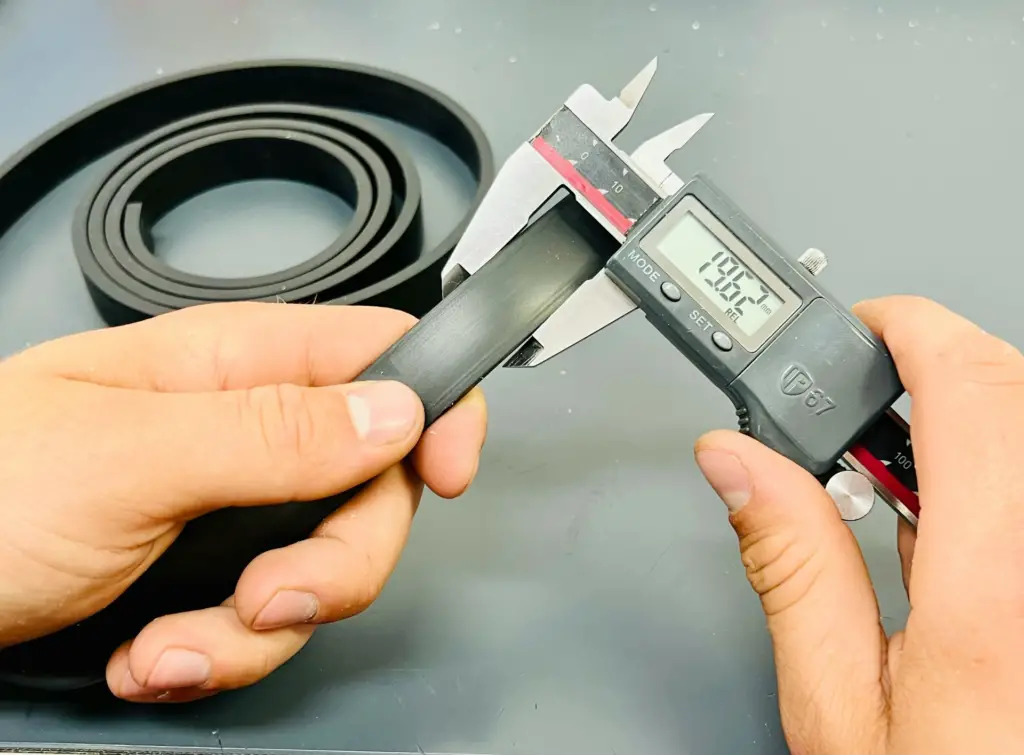
Recently, we procured a thermal performance testing machine. I thought it’d be fun to test what EMI/RFI gasketing thermal conductivity is(I’ve been testing everything I can get my paws on, haha). In this test, we decided to measure the thermal conductivity/thermal impedance of three different EMI/RFI shielding materials. In addition, over the years, many customers have asked what a good thermally conductive pad is that is also electrically conductive.
How’d We Run These Tests
There are several parameters the machine needs to be calibrated to use.
- Temperature: We run our tests at 50ºC. We run most tests at this temperature for ease of use.
- Pressure. This is measured in psi. Our thermal testing unit allows us to test “batch tests”. This means it allows us to test several different pressures. We ran these tests at 20 psi, 40 psi, and 75 psi. We felt that 75 psi gives us a good baseline to test these materials to since they require a little bit more pressure to extract their full potential.
- Each test runs roughly 13 mins for each pressure, we kept that consistent throughout the tests.
Test Subjects
-Silver/Aluminum in Silicone Rubber Matrix @ .032’’ (1/32)
-Silver/Copper in Silicone Rubber Matrix @ .032’’ (1/32)
-Silver/Glass in Silicone Rubber Matrix @ .032’’ (1/32)
Results
-Silver/Aluminum: 1.25 W/mK, RA= 0.779 (K-in2 /W), 0.008 ohm-cm volume resistivity
-Silver/Glass: 1.51 W/mK, RA=0.838 (K-in2 /W), 0.010 ohm-cm volume resistivity
-Silver-Copper: 1.98 W/mK, RA= 0.665 (K-in2 /W), ohm-cm 0.004 volume resistivity
(I ordered these results for a reason)
Interpretation of Results
Before I had tested these materials, I went out, doing Google Searches, and looking for thermal conductivity of EMI/RFI elastomers. I had discovered that EMI/RFI elastomers did have thermal conductivity because they are filled with thermally conductive particles. (one of the most thermally conductive materials around is copper, and aluminum. Silver-Copper unsurprisingly has the highest thermal conductivity, and least thermal resistance. Silver-Aluminum, and Silver-Glass are tied essentially for the electrical performance- but interestingly, the silver-glass has higher thermal conductivity but is nearly tied for thermal resistance. As mentioned in earlier blogs, thermal conductivity is not everything. LOOK at the THERMAL RESISTANCE!!
Obviously, or maybe not obviously to some- pressure has a HUGE impact on thermal conductivity/thermal impedance of a material. Why? It removes the contact resistance that is inherent in any thermal pad. The thinner the pad becomes under the pressure, the more nooks, and crannies of the material are filled in against the testing unit or surface it will be against. In other words, the contact resistance is slowly removed to converge on a bulk thermal conductivity.
Note: These materials are electrically conductive, so obviously they cannot be used for electrical isolation like many different thermal pads we have available.
More Information
NEDC is a large provider/supplier of thermal gap filling materials through die-cutting, waterjet-cutting, and knife-cutting operations. If you have a specific EMI/RFI elastomer you want to buy from us, we are happy to test the thermal conductivity for you. For more information on thermal gap pads materials, please contact sales@nedc.com.










